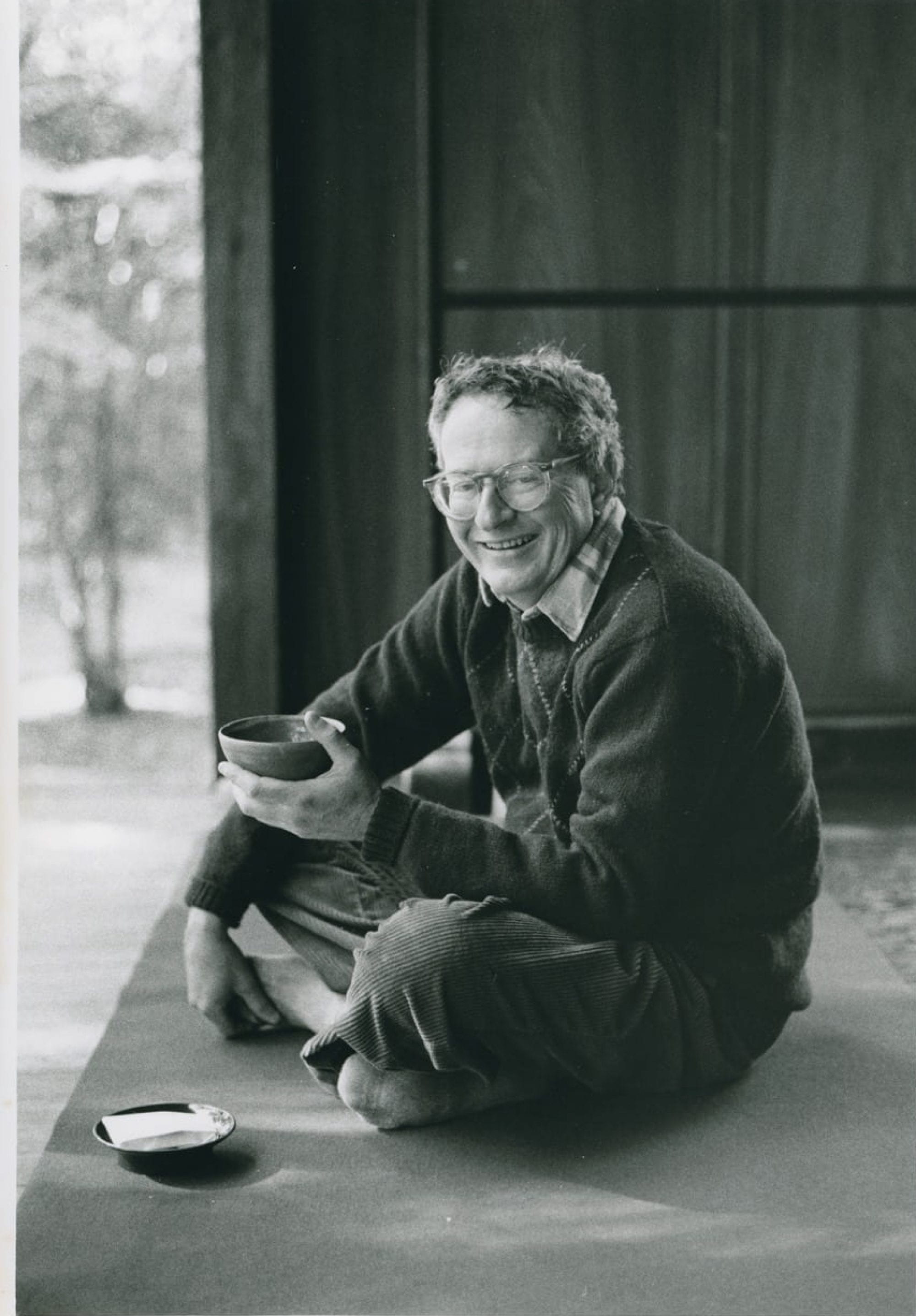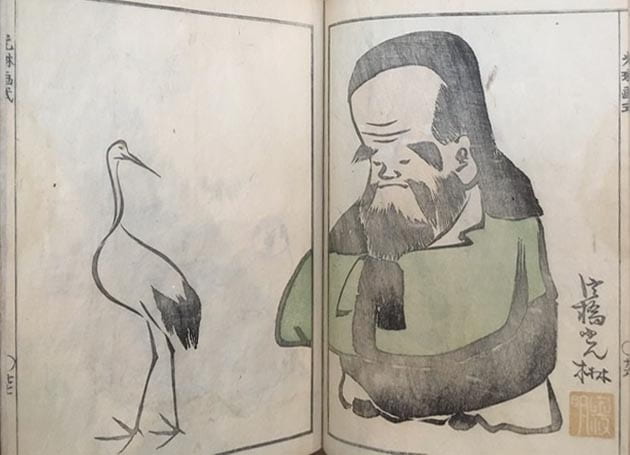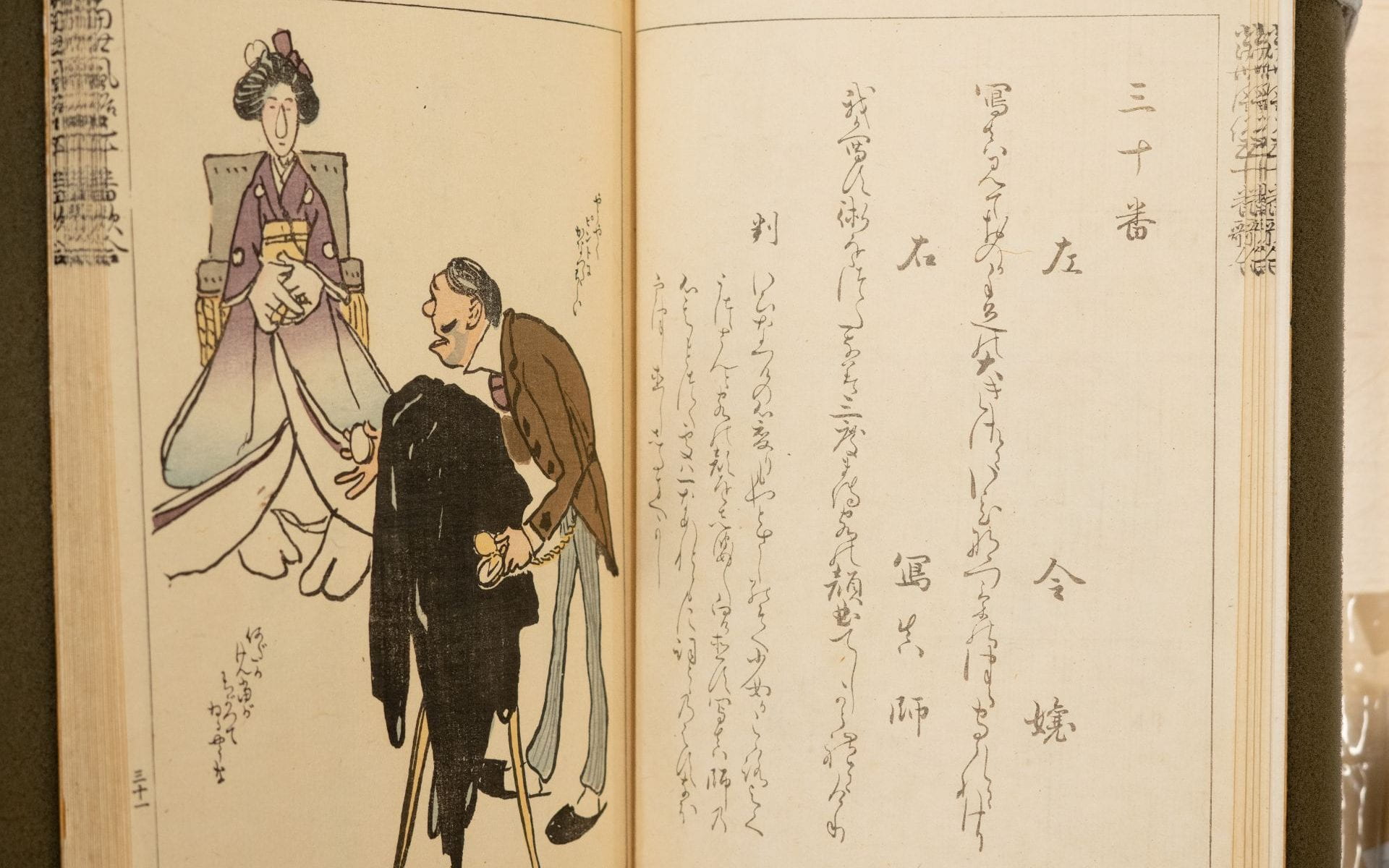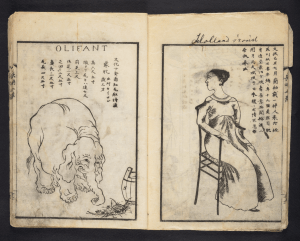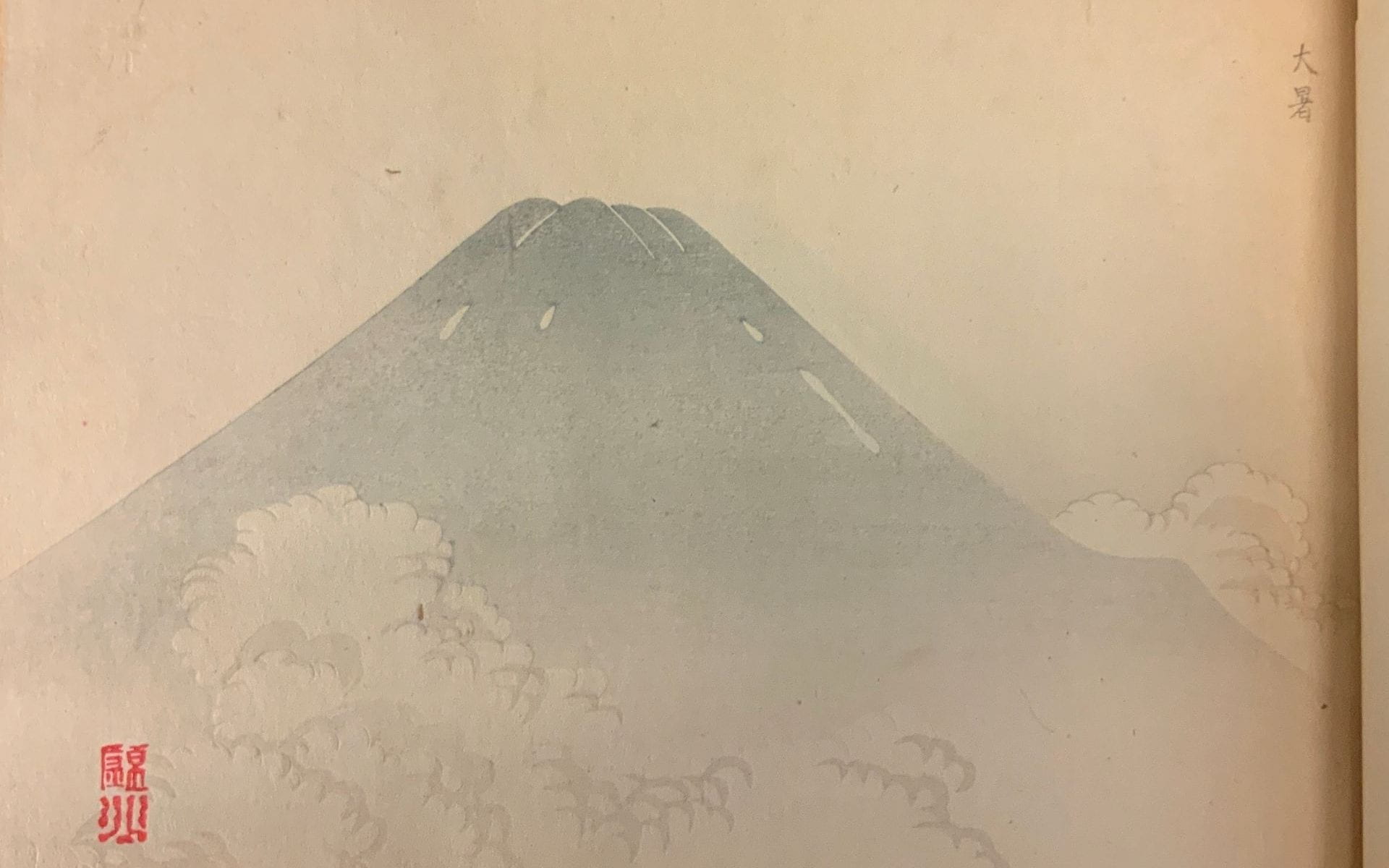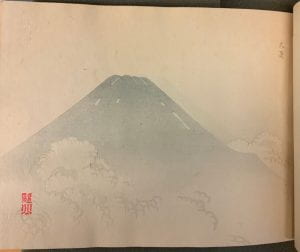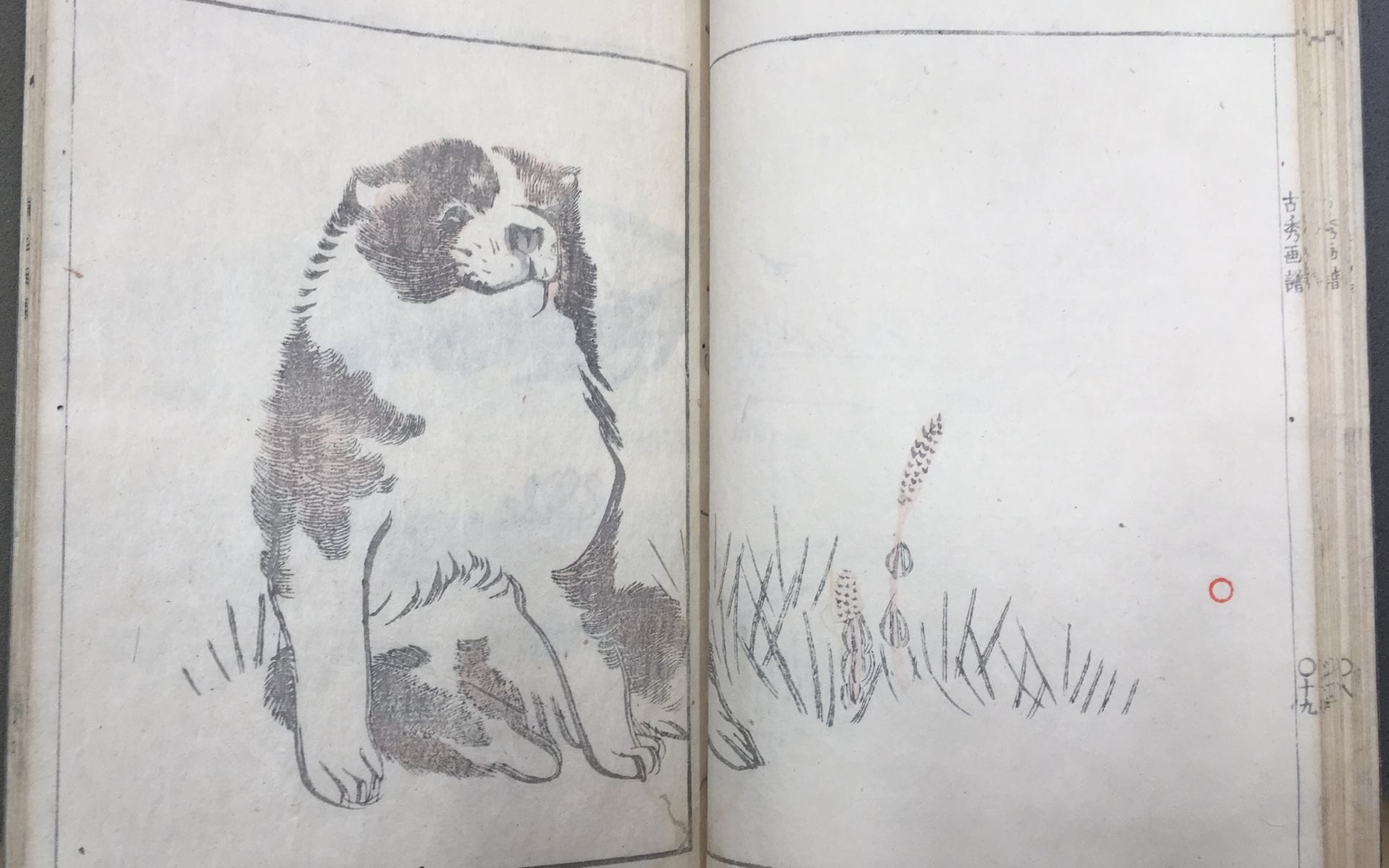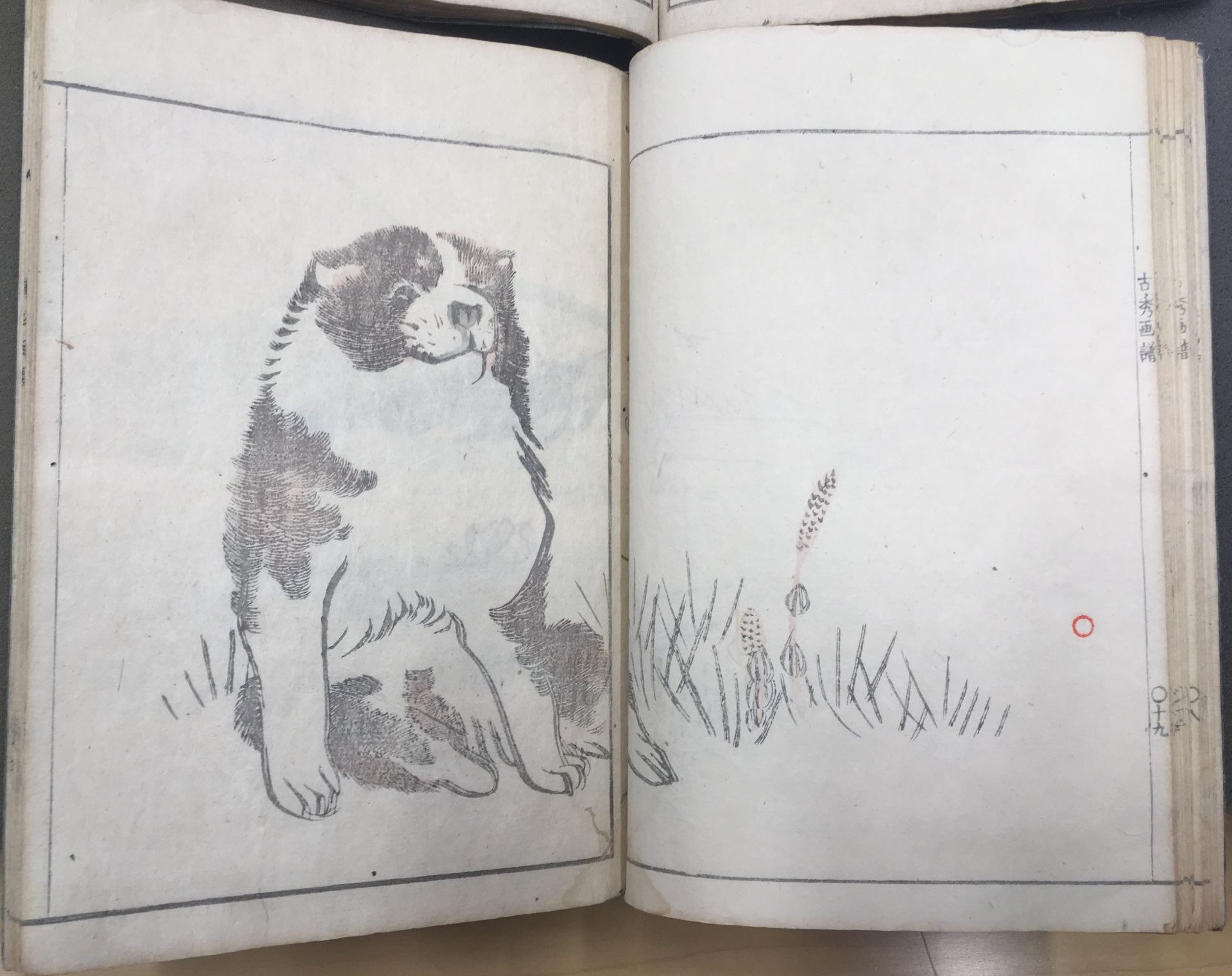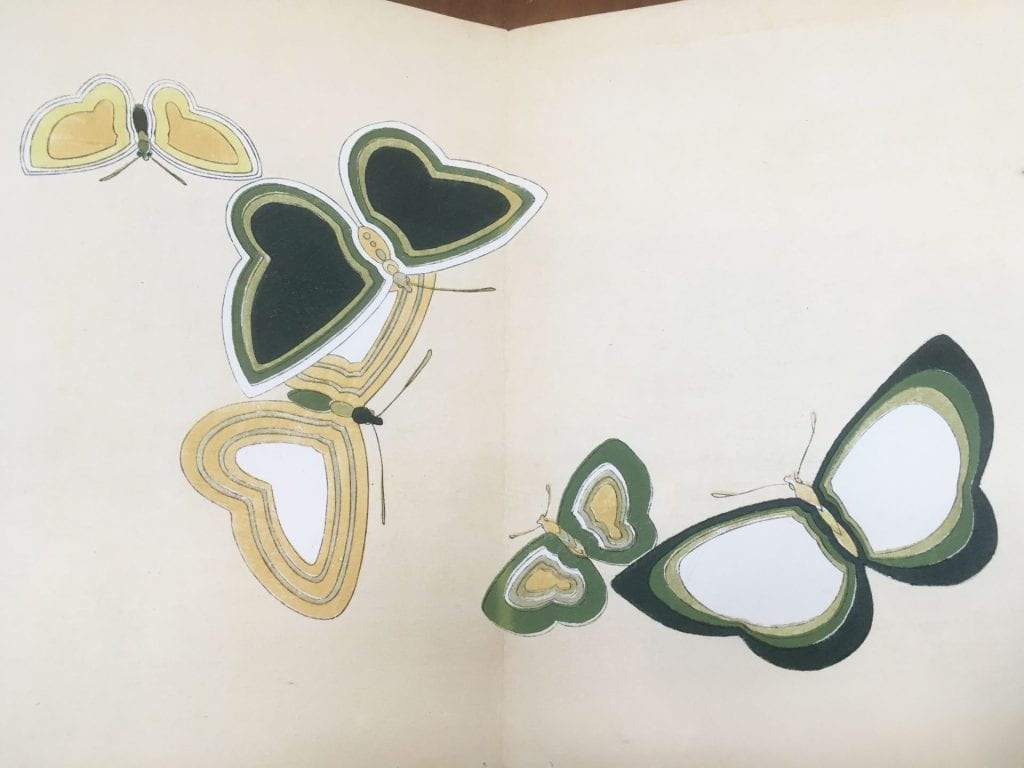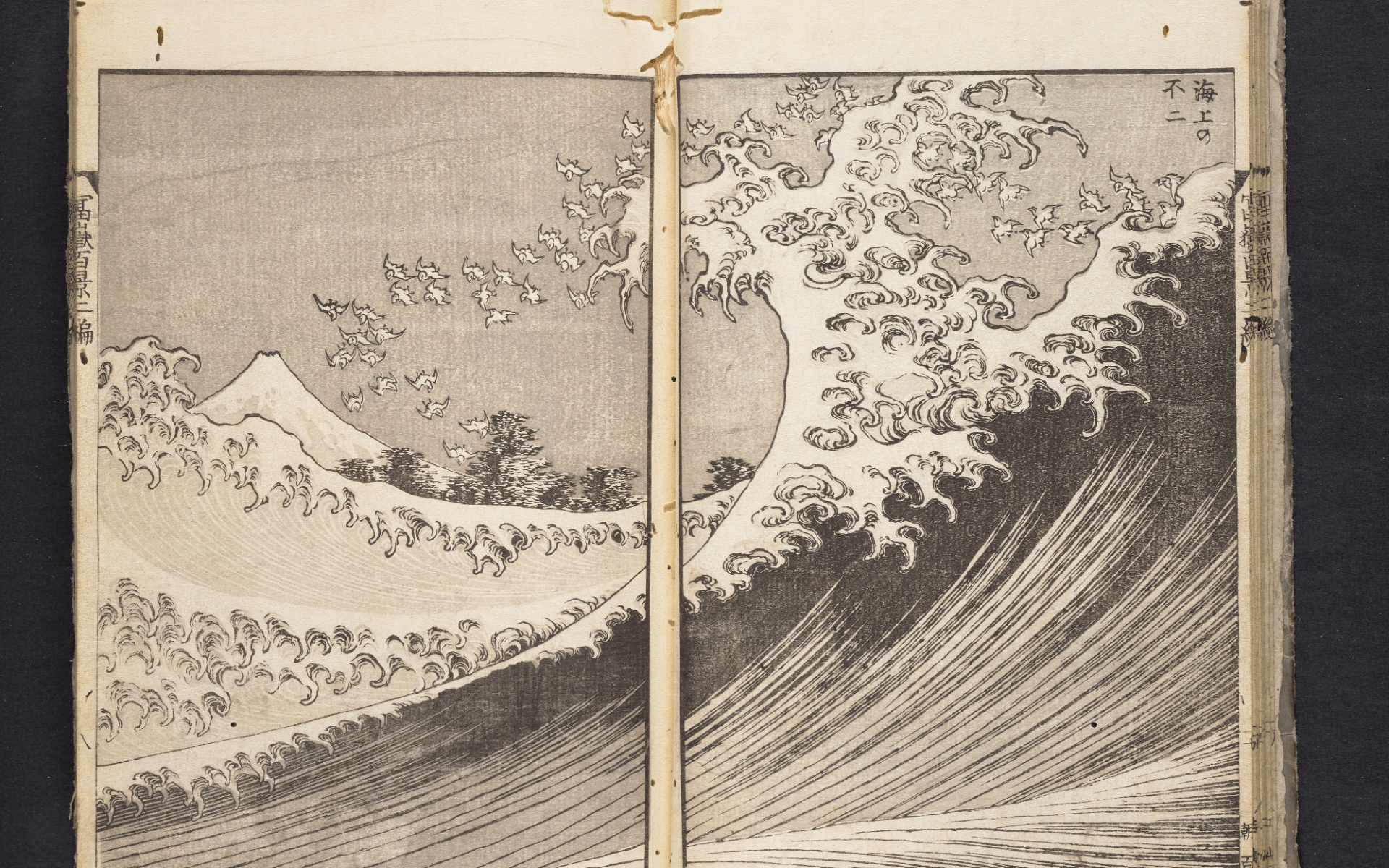Kōrin gashiki is a book of Ogata Kōrin designs as drawn by Aikawa Minwa. Though there is little biographical information available about Minwa, he is well regarded for his book, Manga hyaku-jo (Sketchbook of One Hundred Women, 1814).[1] [2] His work also appears in an anthology of Kyoto artists, Keijo gaen (A Garden of Pictures by Kyoto Artists, 1814).
Artist: Aikawa Minwa (active 1806–1821), after Ogata Kōrin (1658-1716)
Title: Kōrin gashiki (Kōrin’s painting style)
Date: 1818
Publisher: Kikuya Kihei, Kyoto.
Description: 1 vol. with pouch binding; modern case lined with an illustrated sleeve
Medium: Woodblock printed ink and color on paper; paper covers
Format: hanshibon
Dimensions: 25.6 x 18.2 x 1.1 cm
Location: Kislak Center for Special Collections, Arthur Tress Collection. Box 10, Item 6.
Gift of Arthur Tress
Kōrin gashiki is a book of Ogata Kōrin designs as drawn by Aikawa Minwa. Though there is little biographical information available about Minwa, he is well regarded for his book, Manga hyaku-jo (Sketchbook of One Hundred Women, 1814).[1] [2] His work also appears in an anthology of Kyoto artists, Keijo gaen (A Garden of Pictures by Kyoto Artists, 1814).
With Kōrin gashiki, Minwa joins Sakai Hōitsu and Nagamura Hōchu, two leading Rinpa artists of the nineteenth century, in their use of woodblock print books to disseminate and revive Kōrin designs and the Rinpa aesthetic for a new generation, while at the same time claiming roles in the succession of artists.[3] That Minwa’s book follows Hoitsu’s Kōrin hyakuzu (One Hundred Paintings by Kōrin, 1815)[4] and Hōchū’s Kōrin gafu (Album of Kōrin Pictures, 1802)[5] indicates Kōrin’s renewed popularity and a demand for his work.
These books were also intended for other artists to learn from and emulate the Rinpa style. Rinpa (school of Kōrin) was not a family school in the traditional sense, but an aesthetic carried through generations by artists who appreciated his work. Hōitsu referred to the group of artists working in the Kōrin style as the Ogata Lineage, while the term Rinpa came into use in the Meiji period. Kōrin, in turn, found his inspiration in seventeenth-century artists Tawaraya Sōtatsu and Hon’ami Kōetsu. While their influence is apparent in Kōrin’s deft brushwork, details are further simplified, perspective is often abstracted, large areas are flattened with gold leaf or patterning, and his palette intensely colored. We see these characteristics become more pronounced with each generation of Rinpa artists.
Many of the images in Minwa’s book employ other artistic techniques characteristic of Rinpa, such as tarashikomi (“dripping in” of wet into wet) and mokkotsu (“boneless” drawing, without outlines). Motifs common to Rinpa are elegantly represented in this book as well, with an emphasis on the natural world: waves, morning glories, poppies, chrysanthemum, blossoming trees, sparrows, plovers, puppies, rabbits, horses, and monkeys; as well as some figurative scenes from classical literature, and Jurōjin, one of the seven lucky gods, shown with a crane, both symbols of longevity.[6] While Minwa’s drawings appear effortless, and recall the style of Hōchū’s Kōrin gafu,[7] his deer are rendered in a less painterly fashion[8]—perhaps in an attempt at mokkotsu, or a developing style—producing a curious hiccup in the line that leads from Sōtatsu to Sekka.
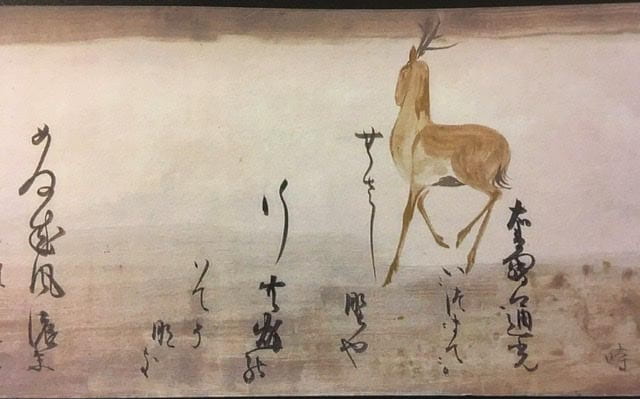
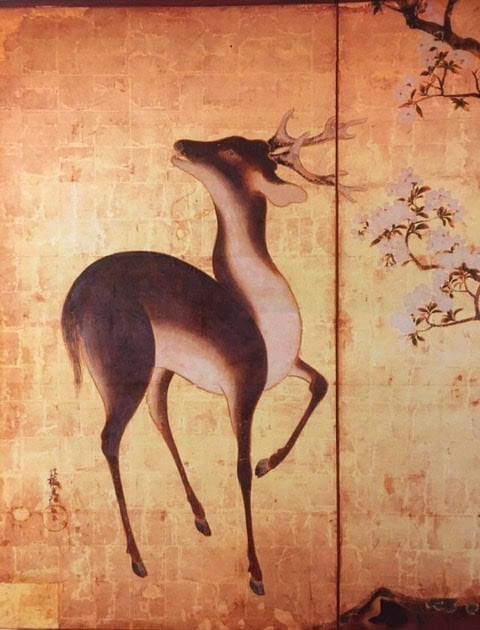

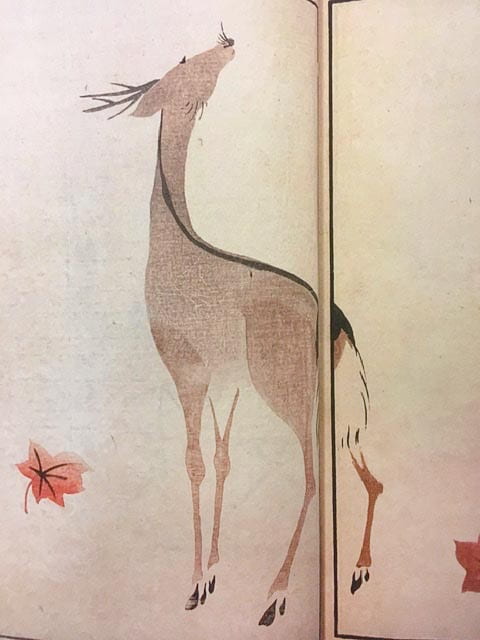

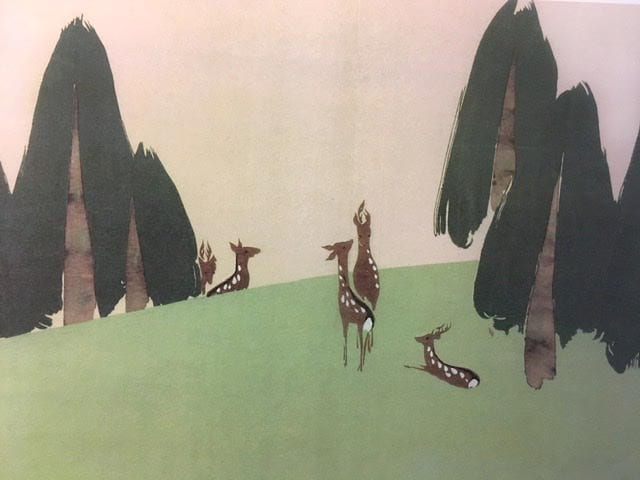
[1] Hillier, J, and Langley Iddins. The Art of the Japanese Book. London: Sotheby’s Publications, 1987, p. 665.
[3] Hillier, J, and Langley Iddins. The Art of the Japanese Book. London: Sotheby’s Publications, 1987.
[5] Box 8, item 11 contains a newer edition from 1895.
[6] Carpenter, John T. Designing Nature: the Rinpa Aesthetic In Japanese Art. New York: Metropolitan Museum of Art , 2012.
[7] Strangely enough, the sleeve that lines the case for this book is an image from Hōchū’s Kōrin gafu! Perhaps their cases got mixed up.
[8] Hillier, J, and Langley Iddins. The Art of the Japanese Book. London: Sotheby’s Publications, 1987.
Other collections:
The Metropolitan Museum of Art
Smithsonian Libraries
The British Museum
National Diet Library
The Gerhard Pulverer Collection
Further reading:
Carpenter, John T. Designing Nature: the Rinpa Aesthetic In Japanese Art. New York: Metropolitan Museum of Art , 2012.
Hillier, J, and Langley Iddins. The Art of the Japanese Book. London: Sotheby’s Publications, 1987.
Posted by Catherine Gontarek, 23 March 2020
